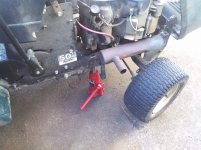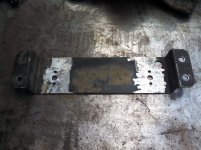Here's tonight's progress.
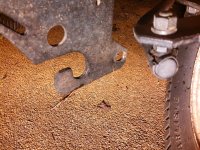
The above pic shows the wallowed-out mounting hole for the front lift arms. I was kind of 50/50 on whether to just weld up the hole, grind it smooth, and drill it out again, or whether to cut off the tab and fab up a new one. I went with welding up the hole, because I figured that way, most of my bad weld would end up getting drilled out again anyway. I even used the opportunity to burn up some old 3/32" 7018 that run really bad. At first, I started trying to build from the bottom up, figuring the shelf I was building would help the next bead lay in well, but it actually worked better going from the top down. The molten metal would sag and fill the hole better than when I was working bottom-up. Also, I ran DCEN for less penetration and faster fill on the relatively thin metal.
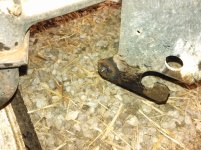
Above is the result, before grinding and drilling. And also after driving through some wet grass. Honestly, nothing much to see there, because I haven't even chipped the slag or brushed it.
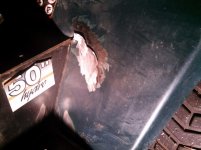
I also discovered a nice crack in the sheet metal of the fender. Now this is a job I would never attack with stick, although I might-could get it done if I had to. But this is tailor-made for TIG. Except that there is that huge gap, which is hardly ideal for TIG, but I can make it work. I tried to think of ways to jam the crack back together, but I don't have a clamp with a throat that deep, and so in the end, I just left it the way it was and filled up the hole with weld metal.
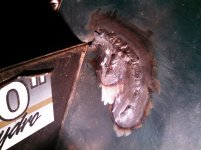
The result. The part that looks like a hole is actually a piece of contamination that floated up.
Next will be some work on the deck. There are some cracks that I'm going to vee out and weld up, and there is an anti-scalp wheel that has plumb broke off, so I'll need to fab up a new mounting bracket for it. This thing is coming together!
One last funny thing: I have always liked the fact that my helmet has its on/off/shade dial on the outside where I can easily get at it without taking it off. But today I found a down-side of that. While welding up under the mower, I pressed my head against the wheel in such a way that I turned the knob all the way off. I got flashed and thought it was because I was obscuring the sensors, so I lowered my head and flashed myself again. Whoops! Fortunately, the hood is always a shade 3, and is always a shade 13 for UV.
